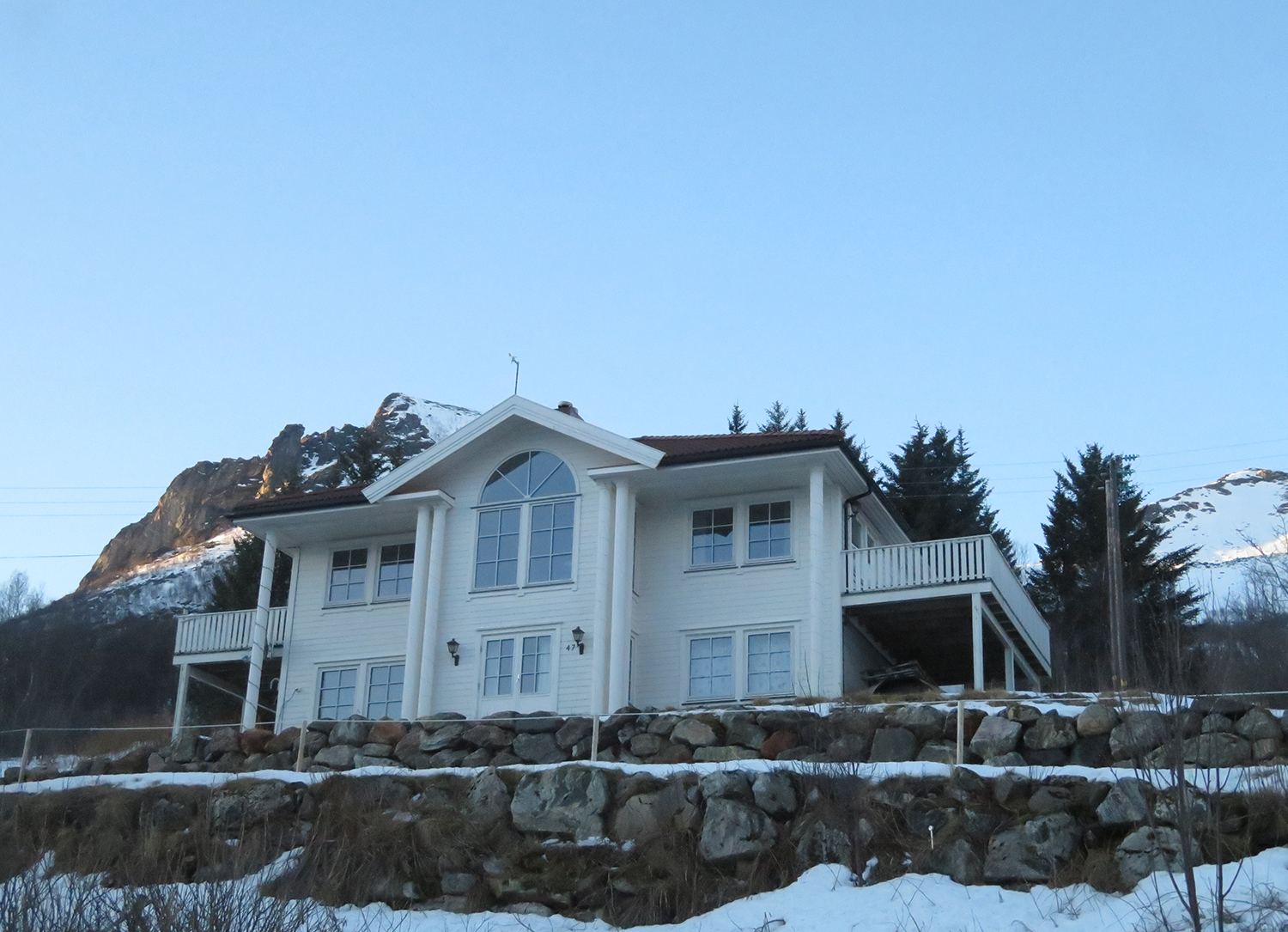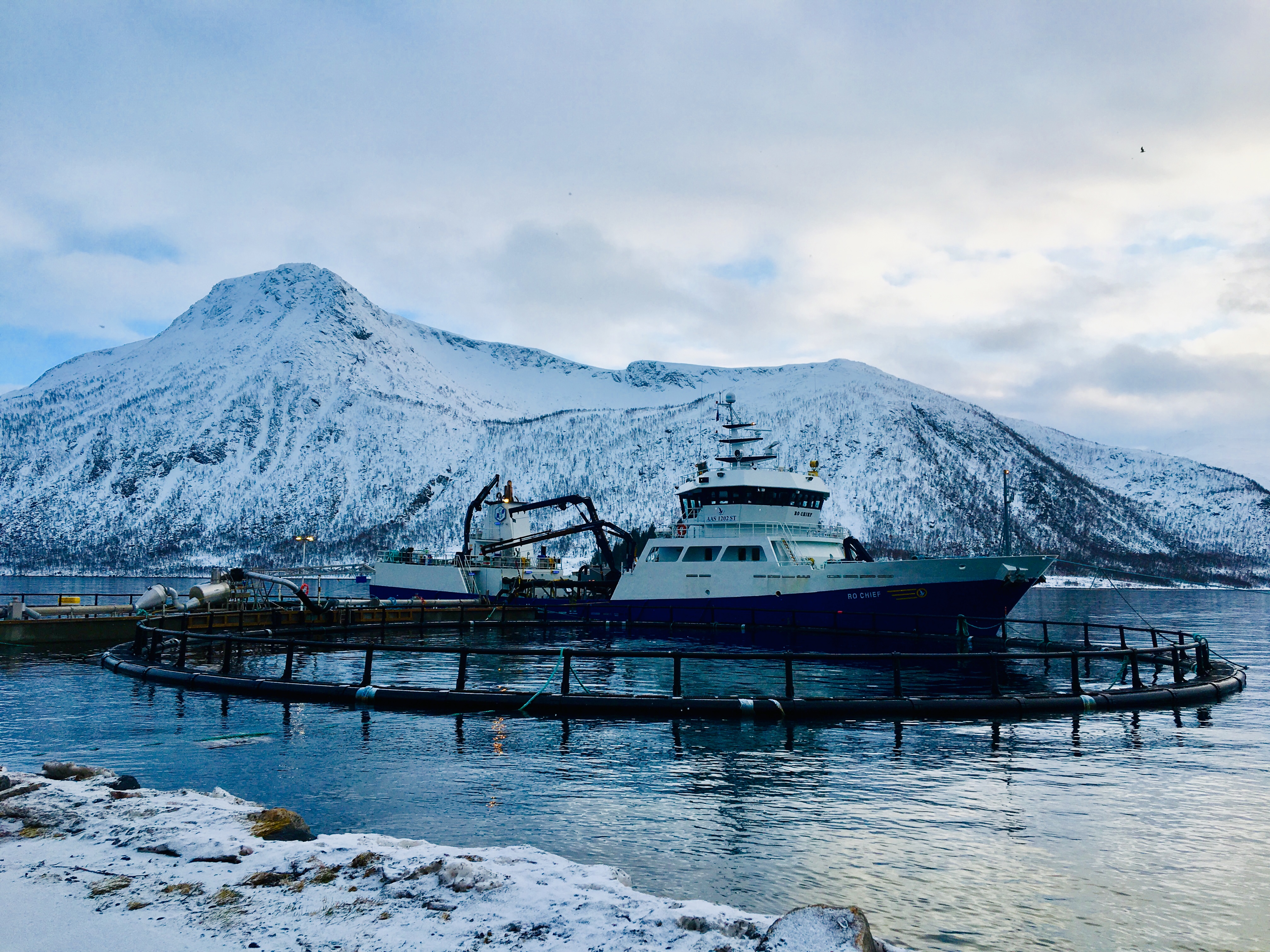The recreational ruin / Fading fishing village / The labor camp / Inventive Societies
Continue
INVENTIVE SOCIETIES
Resurrection - Robotics, aquaculture and sea-food industries.
Norwegian fisheries, the fleet and the land-based production, have the last decade been denoted the Sea-food industries. This change of name illustrates the development of aquaculture, most important the breeding of salmon, constituting a major part of the industries. Of the 2,7 million tons of exported sea-food in 2019, salmon and other red-fish production amounted to 1,5 tons.1 The aquaculture industries are starting to use advanced biological and digital technologies and robotics in the food-production. The range of products is widening. This will also influence the organization of production in the white-fish industries. The current high profit in the white-fish production lies with the value of the high- quality resources. The fish – as opposed to two decades ago – is no longer frozen down, cut and packed into fillet – but exported fresh, salted or dried. Inventive use of technology and new modes of production might bring resurrection to fishing villages.
Norwegian fisheries, the fleet and the land-based production, have the last decade been denoted the Sea-food industries. This change of name illustrates the development of aquaculture, most important the breeding of salmon, constituting a major part of the industries. Of the 2,7 million tons of exported sea-food in 2019, salmon and other red-fish production amounted to 1,5 tons.1 The aquaculture industries are starting to use advanced biological and digital technologies and robotics in the food-production. The range of products is widening. This will also influence the organization of production in the white-fish industries. The current high profit in the white-fish production lies with the value of the high- quality resources. The fish – as opposed to two decades ago – is no longer frozen down, cut and packed into fillet – but exported fresh, salted or dried. Inventive use of technology and new modes of production might bring resurrection to fishing villages.
Place
Torsken is situated in Torskenfjorden at the very beginning of the Skipsfjorden and on the south side of a 600-meter-high mountain. The narrow inlet gives protection from the open sea. A road built in 1952 connects to Gryllefjord.
Historically Torsken was one of the main settlements in Senja, the church probably dating back to the middle ages, the current church-building being raised in 1784.2 The plot structure follows medieval patterns. Today the two medieval streets organize single family housing along the slope. The harbor is situated centrally in the village, the salmon production to the west. Torsken provides one small grocery store. School and kindergarten are located in Gryllefjord.
Torsken, was a society of “kombinasjonsbruk” – farming of livestock and vegetables for food combined with fisheries. The fishing industries, receiving and producing cod closed down after the 2019 season. Torsken today has 210 inhabitants and around 200 buildings.
Torsken is situated in Torskenfjorden at the very beginning of the Skipsfjorden and on the south side of a 600-meter-high mountain. The narrow inlet gives protection from the open sea. A road built in 1952 connects to Gryllefjord.
Historically Torsken was one of the main settlements in Senja, the church probably dating back to the middle ages, the current church-building being raised in 1784.2 The plot structure follows medieval patterns. Today the two medieval streets organize single family housing along the slope. The harbor is situated centrally in the village, the salmon production to the west. Torsken provides one small grocery store. School and kindergarten are located in Gryllefjord.
Torsken, was a society of “kombinasjonsbruk” – farming of livestock and vegetables for food combined with fisheries. The fishing industries, receiving and producing cod closed down after the 2019 season. Torsken today has 210 inhabitants and around 200 buildings.
Local production
Norwegian fish-farming was started up in the late 1970s, by local actors and initiatives in the fjords all along the coast. The production units gained high value and were mostly bought up by major national actors, today turned into international companies like Marine Harvest (John Fredriksen), Lerøy Seafood Group and Cermaq (Mitsubishi). Norwegian salmon amounts to 50% of the world production.
Salmon Production in Torsken, Wilsgard AS, was founded by two brothers from the fishing village and started up in 1983, at a time with strict governmental regulation of the cod-resources and low international prices for filet. 39% of the company was in 2016 sold to the listed sea-food giant Norway Royal Salmon (NRS), 60% of the company is still being controlled locally. Wilsgard produces fresh, vacuum packed fillets of Salmon, mostly for the Norwegian marked.3 Slaughterhouse, packing and administration is localized in the village. The salmon is brought by boat and exported by trailer. The business today totally produce 1800 tons of Salmon fillets and provides work for 25 people in Torsken. Totally the company employs 58 persons at 8 different sites for fish-farming.
Norwegian fish-farming was started up in the late 1970s, by local actors and initiatives in the fjords all along the coast. The production units gained high value and were mostly bought up by major national actors, today turned into international companies like Marine Harvest (John Fredriksen), Lerøy Seafood Group and Cermaq (Mitsubishi). Norwegian salmon amounts to 50% of the world production.
Salmon Production in Torsken, Wilsgard AS, was founded by two brothers from the fishing village and started up in 1983, at a time with strict governmental regulation of the cod-resources and low international prices for filet. 39% of the company was in 2016 sold to the listed sea-food giant Norway Royal Salmon (NRS), 60% of the company is still being controlled locally. Wilsgard produces fresh, vacuum packed fillets of Salmon, mostly for the Norwegian marked.3 Slaughterhouse, packing and administration is localized in the village. The salmon is brought by boat and exported by trailer. The business today totally produce 1800 tons of Salmon fillets and provides work for 25 people in Torsken. Totally the company employs 58 persons at 8 different sites for fish-farming.
Future
An interesting potential for the future of the fishing village Torsken is linked to aquaculture and how these industries are owned, organized, localized and run along the Norwegian coast.
It is also linked to Norwegian regional policies and the amount of efforts that are put in to uphold the remote Senja settlements. Torsken is an interesting example where the salomon production represents an alternative to the struggling cod-industries. In other and economically speaking more thriving fishing societies like Husøy further north on Senja and Myre in Vesterålen, the new technologies, including robotics represent an alternative for renewal, bringing in a well-educated and highly competent staff, to settle in the community.
An interesting potential for the future of the fishing village Torsken is linked to aquaculture and how these industries are owned, organized, localized and run along the Norwegian coast.
It is also linked to Norwegian regional policies and the amount of efforts that are put in to uphold the remote Senja settlements. Torsken is an interesting example where the salomon production represents an alternative to the struggling cod-industries. In other and economically speaking more thriving fishing societies like Husøy further north on Senja and Myre in Vesterålen, the new technologies, including robotics represent an alternative for renewal, bringing in a well-educated and highly competent staff, to settle in the community.



1https://en.seafood.no/news-and-media/news-archive/norwegian-seafood-exports-top-nok-107-billion-in-2019/
2Arthur Brox, Berg og Torsken bygdebok, Tromsø,1959.
3https://www.wilsgaard.no/en/about/
3https://www.wilsgaard.no/en/about/